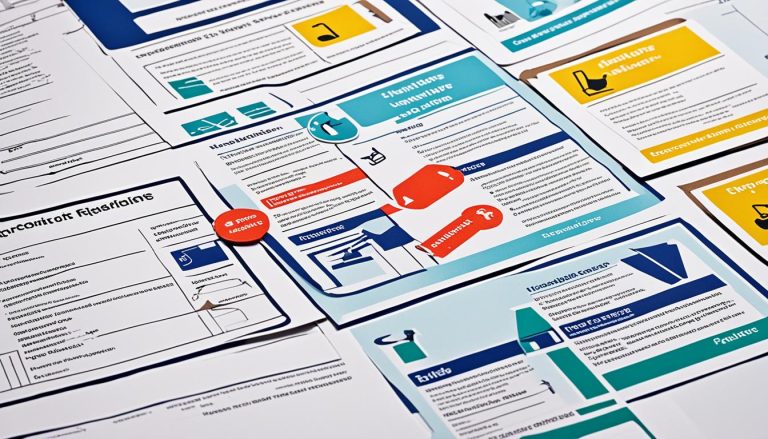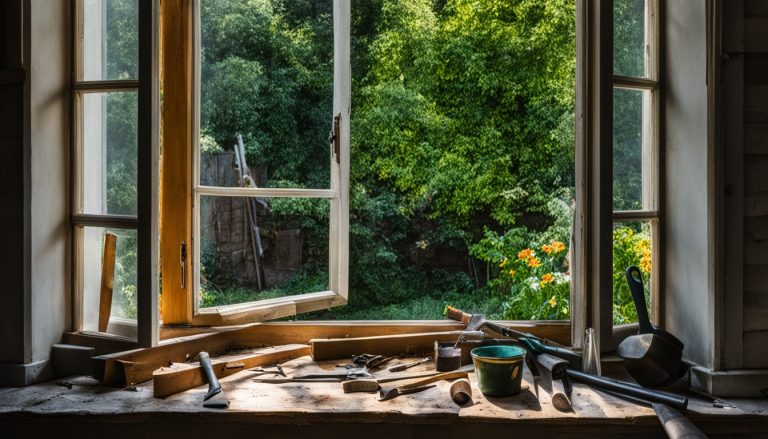Dealing with blocked drains outside your property can be tricky. The Water Industry (Schemes for Adoption of Private Sewers) Regulations 2011 say property owners look after the drains on their land. But, the local water companies handle lateral drains and sewers outside your property.
It’s key to know this, as many think they’re in charge of all drains, even those under public roads. Actually, the local water and sewerage companies (WaSCs) or the Highways Agency look after these. This depends on where they are and who owns them.
Figuring out who owns drains and sewers can be hard. But it’s vital for homeowners to know who’s responsible for outside drainage issues. This way, they can tackle problems and keep their area well-drained.
What is the Difference Between a Drain and a Sewer?
Knowing the difference between drains and sewers is key when dealing with drainage problems. In the UK, these systems have different roles and are managed by different groups. Drains and sewers are not the same thing.
Defining Drains and Sewers
A drain is a pipe that takes wastewater away from a building or property. It’s usually found within the property and the owner is in charge of it.
A sewer, on the other hand, is a big network of pipes. It gathers wastewater from many places and sends it to a treatment plant. Sewers are looked after by the local water authority or utility company.
Lateral Drains and Their Role
Lateral drains are very important in the drainage system. They are pipes that move wastewater from a property to a sewer. This usually happens outside the property, under pavements or roads. The local water authority is usually in charge of them, not the property owner.
Understanding the differences between drains and sewers is vital. It helps homeowners and property managers know who should fix any drainage issues. This ensures the right person takes care of the problem.
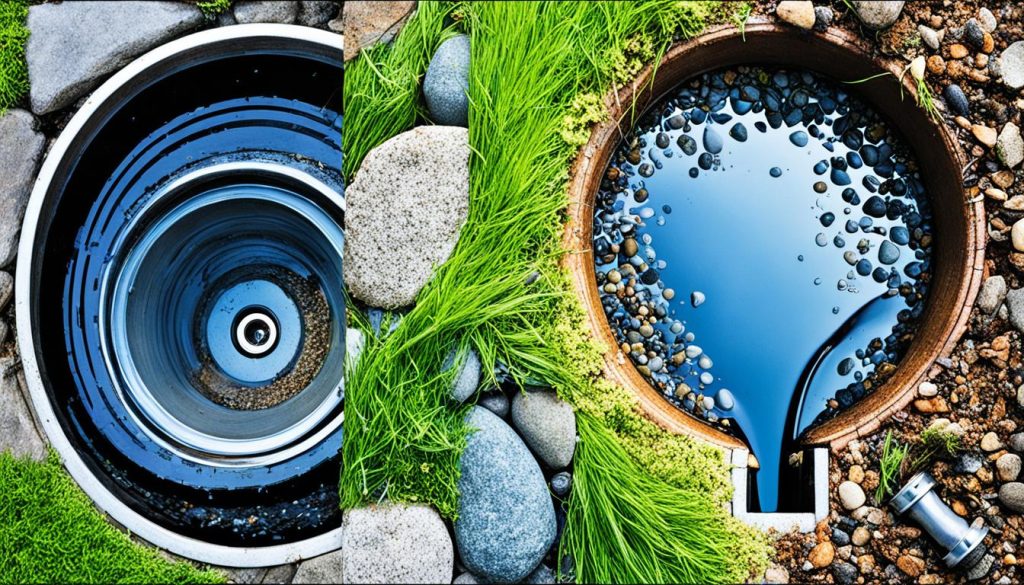
| Feature | Drain | Sewer |
|---|---|---|
| Definition | A pipe that carries wastewater from a single building or property | A network of pipes that collects wastewater from multiple properties and buildings |
| Ownership | Property owner’s responsibility | Owned and maintained by the local water authority |
| Lateral Drains | Located within the property boundaries | Located outside the property, often under public pavement or road |
| Maintenance | Property owner’s responsibility | Local water authority’s responsibility |
Blocked Drains Outside Who is Responsible in the UK?
Understanding who fixes blocked drains outside your home is key in the UK. Homeowners and water companies have clear roles. Sometimes, these roles can get mixed up with shared drainage systems.
Private Drains and Property Owner Responsibilities
Homeowners must look after the drains on their property. These are your private drains. You need to fix any blockages or problems. If drains get blocked, it can cause waste to back up and flood your home. This is a big hassle and could lead to water damage.
Public Sewers and Water Company Responsibilities
The water company looks after the public sewer network. This includes lateral drains shared with neighbours. If a blockage is outside your property or affects many homes, the water company should fix it.
Shared Drainage Responsibilities
- Before, sewers and lateral drains were the homeowner’s job. Now, local water companies usually handle them.
- If you’re having sewer or lateral drain issues, contact your local water company. They’re in charge of these systems.
- Signs you might need to fix the blockage yourself include no other homes affected, no shared drains, and no big flooding.
Knowing who does what with blocked drains outside your home is vital. It helps you deal with the problem and keep your drains working well.
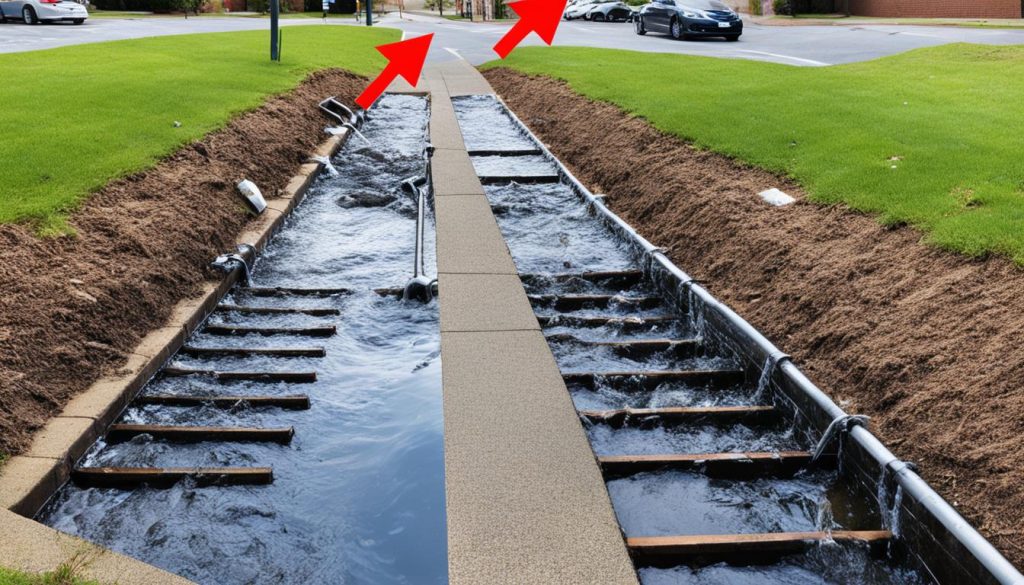
Private and Unadopted Sewers
In the UK, who fixes sewers depends on the property type and who owns it. If you’re in a block of flats or a caravan site, you might have a private or unadopted sewer. These aren’t looked after by the local water authority. Instead, the property owners are in charge.
Since October 2011, the local authority now looks after shared drains. But, if you have a private or unadopted sewer, you and other owners must pay for upkeep and repairs together.
Sewers are usually under streets, so homeowners don’t usually handle repairs. But, if you have a private or ‘unadopted’ sewer, you’re in charge of fixing it. This is true if the sewer is within your property’s limits.
For flats and apartments, the management company usually pays for drain fixes outside your property. But, if it’s a private or unadopted sewer, you and other owners must pay for repairs.
| Scenario | Responsibility |
|---|---|
| Detached or semi-detached homes | Homeowners are usually responsible for maintaining and repairing private drains within the property boundary. |
| Flats and apartments | Management companies typically cover the cost of resolving blocked, damaged, or collapsed drains outside the property boundary. |
| Private or ‘unadopted’ sewers | Property owners are jointly responsible for the cost of maintaining and repairing the private sewer system. |
Dealing with drainage and sewerage in the UK can be complex. Many factors decide who fixes and maintains them. Owners should check their property’s drainage setup and sewer details carefully.
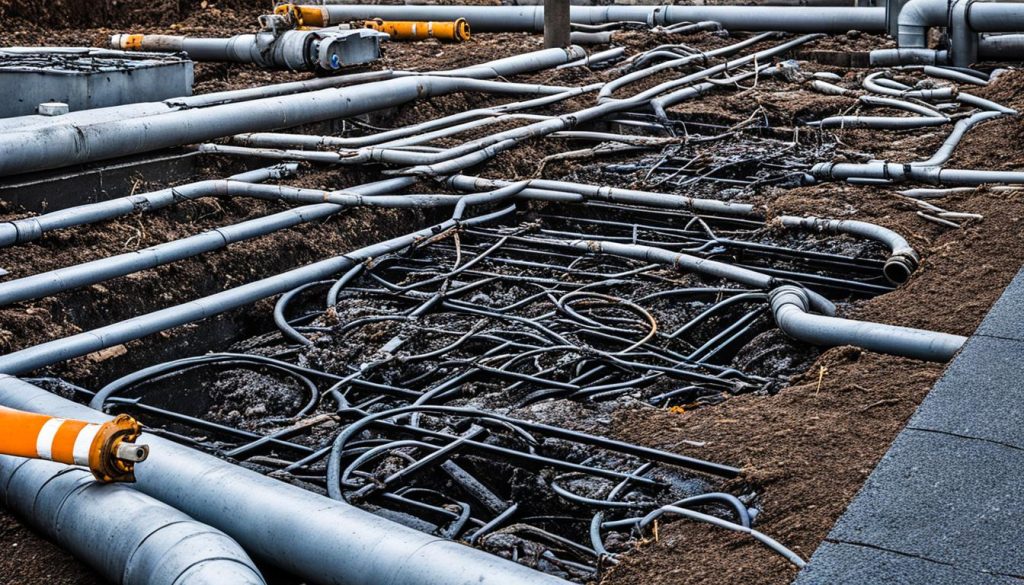
Connecting to Public Sewers
In the UK, water and sewerage companies must provide public sewers for drainage. Homeowners can connect their drains to these sewers, but they might have to pay for it.
Right to Connect to Public Sewer System
Most property owners can connect their drains to the nearest public sewer if it’s within 100 feet of their property. If the sewer is too far away, and the property uses a cesspool or septic tank, the owner doesn’t have to connect. The local authority might pay for the connection if they agree.
Costs and Responsibilities for Connection
- The water and sewerage company looks after the public sewer network.
- Homeowners and landlords are in charge of the household waste pipes up to the public sewer.
- Connecting to the public sewer usually costs the property owner. But, the water company might help pay in some cases.
- In remote places, the cost to connect might be too high. The water company might not have to provide a sewer connection.
It’s crucial for property owners to know their rights and duties with public sewer connections. Understanding the costs and steps involved helps homeowners make better choices and avoid future problems.
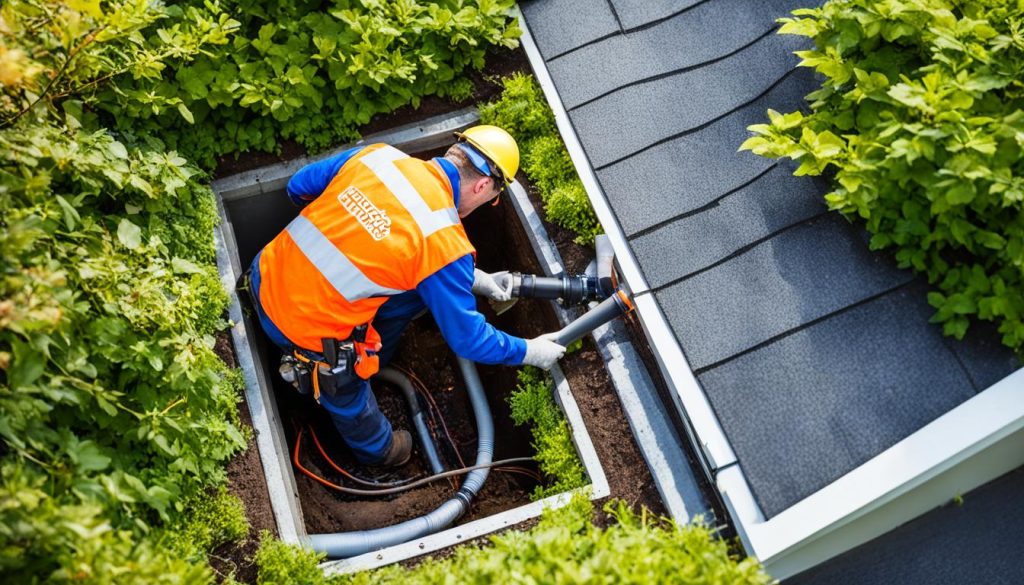
Identifying Drain and Sewer Ownership
Figuring out who looks after drains and sewers can be tricky. It depends on if they are for private or public use. Luckily, there are ways for homeowners to find out who owns their drains and sewers.
Checking Property Deeds and Sewer Maps
Looking at property deeds is a good first step. These documents might show where the property lines are and if any drains or sewers are on the land. Also, UK water and sewerage companies have sewer maps for homeowners to look at. These maps show where public and private drains are near the property.
If property deeds or sewer maps don’t help, homeowners can reach out to their local water and sewerage company. These companies keep track of the drainage systems in their area. They can usually tell who owns a specific drain or sewer.
By identifying drain ownership, checking property deeds, and accessing sewer maps, homeowners can figure out their duties. They’ll know what to do if their drains or sewers are blocked or not working right.
Preventing and Resolving Blocked Drains
Blocked drains can be a big problem for homeowners and property managers. It’s important to know why drains get blocked and how experts can fix them. This keeps your drainage system working well.
Common Causes of Drain Blockages
Blocked drains often happen because of:
- Tree roots getting into the drains
- Hair building up in bathroom drains
- Fats, oils, and grease going down kitchen sinks
- Flushed items like wet wipes and sanitary products
Regular cleaning and being careful about what you put down drains can stop these blockages. Clean out plug-holes, use drain cleaners, and keep drains clear of debris.
Professional Drain Unblocking Services
Often, you need a pro to fix a blocked drain. Drainage experts use powerful water jets and CCTV to find and clear blockages. This is quicker, cheaper, and protects your drains.
Who looks after drains depends on if they’re on private or public land. Homeowners deal with drains on their property, while public sewers are looked after by local water authorities. Knowing this can help you handle blocked drains fast and avoid legal trouble.
Preventing blockages and getting help when needed keeps your drains working well. This saves you from expensive and annoying problems.
| Cause | Description | Preventive Measures |
|---|---|---|
| Plant Matter | Tree roots, leaves, and other organic matter can enter the drainage system and cause blockages. | Regular inspection and maintenance of external drains and pipes to remove debris. |
| Hair Buildup | Hair, especially in bathroom drains, can accumulate and clog the pipes over time. | Regularly clean plug-holes and use drain-clearing products to prevent hair buildup. |
| Fats, Oils, and Grease | Pouring cooking oils, fats, and grease down kitchen sinks can lead to blockages as they solidify in the pipes. | Avoid pouring fats, oils, and grease down the sink; instead, dispose of them properly. |
| Non-biodegradable Items | Flushing wet wipes, sanitary products, and other non-biodegradable items can clog the drainage system. | Only flush toilet paper and natural waste down the toilet; dispose of other items properly. |
Conclusion
In summary, the UK has complex rules for who looks after drains. You’re usually in charge of drains on your property. But, shared drains and lateral drains outside your property are often the local water authority’s job. If you have a private sewer, you and other connected properties share the upkeep.
To figure out who’s in charge, check your property deeds and sewer maps. Also, talk to your water company. Keeping drains clear involves regular maintenance, proper waste disposal, and talking to your landlord and neighbours. This way, you can avoid and fix blocked drains inside and outside your home.
Understanding who owns and looks after drains is key. It shows how important it is to manage drains well, talk clearly, and work together. By doing this, we can reduce the trouble and damage from blocked drains. This helps keep our drainage system working well for everyone.
FAQ
Who is responsible for maintaining drains and sewers?
You look after the drains on your property. If you share a lateral drain with your neighbour, your water company takes care of it. Most sewers and lateral drains are now looked after by local water companies.
Do I have the right to connect my property to the public sewer system?
Usually, you can connect your drain to the public sewer, but you might have to pay. If the public sewer is far from your property and your drain goes into a cesspool or septic tank, you might not have to connect. But, the local authority can make you connect if they pay for the costs.
How can I identify who is responsible for the drains and sewers serving my property?
If you’re unsure about your drains, talk to your sewerage company or check your property’s deeds. You can also look at a sewer map (your sewerage company must give you one if you ask) or contact your local authority.
What are the common causes of blocked drains and how can they be resolved?
Blocked drains often happen because of things like tree roots, hair, fat, oils, and other items like wet wipes. To prevent blockages, clean your drains regularly. But, most blockages need a professional fix with high-pressure jetting equipment.


